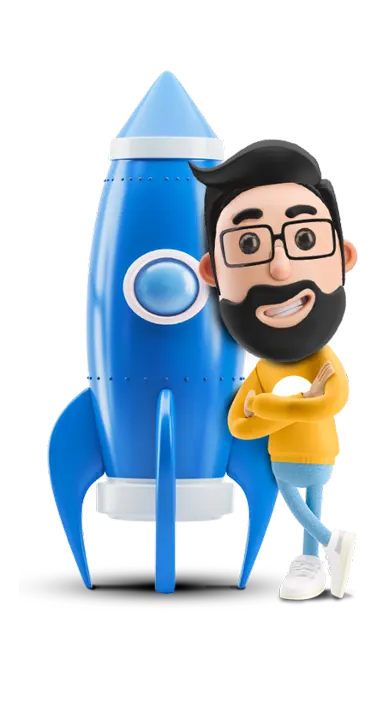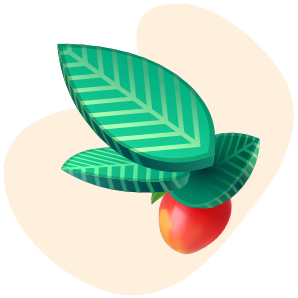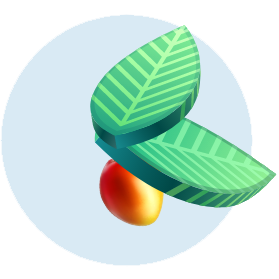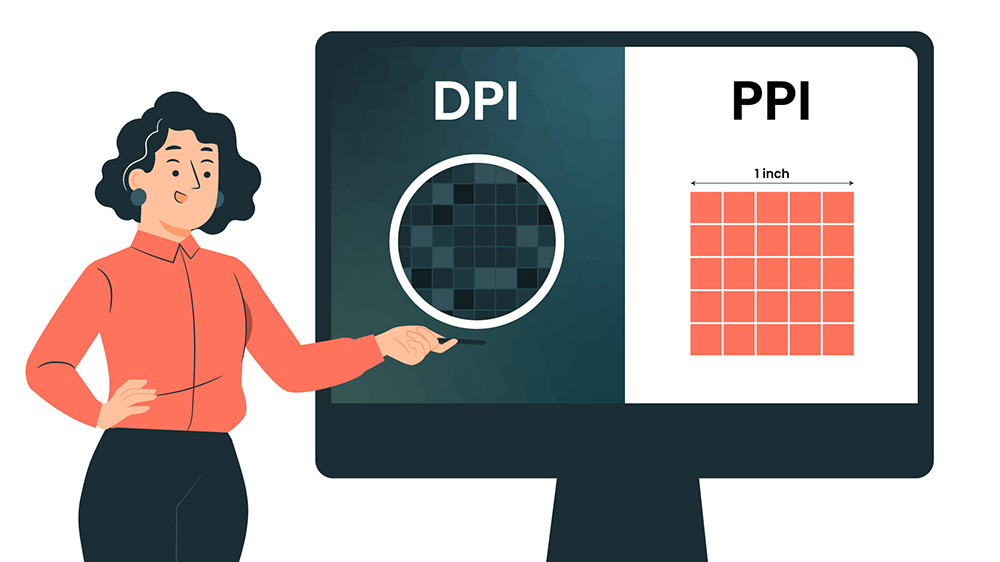
Launching Soon
Join our VIP list to receive early access and a LIFE-TIME discount on your Graphic
Design subscription.



When you work with designers, you will often hear the terms DPI or PPI – which are terms used to describe the image resolution required for the design collateral. However, they do not have the same uses and have distinctive differences.
In this article, we will explain the differences between DPI and PPI, their functions and their applications. By the end of this article, your understanding of the differences will help you come up with high-quality designs with minimal image resolution errors.
Let’s begin with some definitions.
It is a measure of the resolution of a printing or display device, such as a printer or computer monitor. The higher the DPI, the more dots or pixels the device is capable of displaying or printing per inch, which generally results in a higher quality or clearer image.
For example, a printer with a DPI of 1200 is capable of printing 1200 dots or pixels per inch, which would result in a higher quality print than a printer with a DPI of 600. Similarly, a computer monitor with a DPI of 72 would not be as sharp or clear as a monitor with a DPI of 144.
DPI is often confused with PPI, or "pixels per inch," which is a measure of the resolution of an image file. However, DPI refers to the resolution of the output device, such as a printer or monitor, while PPI refers to the resolution of the input image.
In printing, DPI is important because it determines the quality and clarity of the final printed product. Higher DPI printers are generally more expensive and produce higher quality prints, but they may also be slower and use more ink or toner.
In digital displays, DPI is less important because most people are viewing the display from a fixed distance and the human eye is not as sensitive to small differences in resolution at typical viewing distances. However, higher DPI displays may still be preferred for certain tasks, such as photo or video editing, where greater detail and clarity are desired.
 DPI and PPI play a huge role in printing. Image:
DPI and PPI play a huge role in printing. Image:
It is a measure of the resolution of an image file or display. It refers to the number of pixels in an image, with a higher PPI generally resulting in a higher quality or clearer image.
For example, an image with a PPI of 72 would have 72 pixels in a 1-inch by 1-inch area, while an image with a PPI of 300 would have 300 pixels in the same area. The higher PPI image would generally be of higher quality because it has more pixels, resulting in greater detail and clarity.
In printing, PPI is important because it determines the quality and clarity of the printed image. Higher PPI images will generally produce higher quality prints, but they may also be larger in file size and take longer to print.
In digital displays, PPI is also important because it determines the clarity and sharpness of the image on the screen. Higher PPI displays, such as those found on newer smartphones and tablets, generally have higher resolution and produce clearer images. However, the human eye is not as sensitive to small differences in resolution at typical viewing distances, so the difference in PPI may not be noticeable to most people.
 When designing, it’s important to consider the intended use of an artwork in order to decide which measure or value would be best. Image: Brandripe
When designing, it’s important to consider the intended use of an artwork in order to decide which measure or value would be best. Image: Brandripe
Despite our best efforts to simplify these terms, it's completely understandable if it's still confusing. By working with Brandripe you can lean on the expertise of our creative experts who will be more than happy to share their experiences and knowledge.
They say experience is the best teacher and with Brandripes experience with over 100 SMEs, marketing teams, startups and enterprises, you’d be in good hands. Here are other reasons, Brandripe is the best partner for your design needs:
Sounds like a smart way to kickstart your new projects? You bet. Let’s get on a 15-minute VIP Demo Call to discuss your quarterly goals and we will share how our design team can help, as well as talk you through all the other benefits of working with us!

